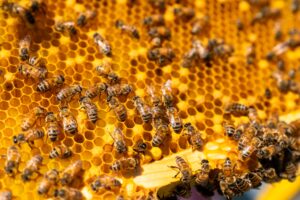‘Bush tucker’ has been used by Indigenous Australians for over 60,000 years.
But while bush tucker had fallen a little by the way side in recent years, it’s seen a rise in popularity in cooking and modern cuisine over the past few years.
These days, a lot of native produce can be found online and sometimes even in gourmet shops and local supermarkets.
Which has seen a problem arise – how do we make sure our love for bush tucker doesn’t destroy the bush ecosystem?
Supply can’t always match demand
Famous Danish chef René Redzepi opened a temporary restaurant in Sydney incorporating bush foods into the cuisine, which sold out every day in six months of operation.
Noongar Elder Dale Tilbrook says the chef used everything under the bush tucker umbrella including fish and shellfish, with a main focus on those locally available.

“Although this raised the profile of bush foods dramatically, it also led to some shortages in their supply.”
She says it’s important to consider the implications for sustainability, fauna interactions and ecosystem balance.
“Just because the city folks find out and want it, doesn’t mean they can have it.”
“The wild harvest belongs to Aboriginal people and the animals,” Dale says.
She says traditionally, the Aboriginal people only took what they could eat that day.
And the native animals had special interactions with the native plants.
“Emus eat quandongs and spread seed across the land.”
“And woylies collected and ate sandalwood kernels and seeds, leaving them all over the territory, so we got new sandalwood stands.”
Woylies once covered two-thirds of the country but are now only found in two locations in southwest WA.
And so a new industry is born
Dale says it is vital to manage the wild harvest but also encourage cultivation of the food to make this a sustainable industry.
Underpinning this is ethical engagement with Aboriginal people so they are involved in the supply chain.
“We have the knowledge and over 60,000 years looking after Country,” Dale says.
“Our stories contain information about the plants. We know which plants are good to eat and which have pharmaceutical benefits.”

“Although this raised the profile of bush foods dramatically, it also led to some shortages in their supply.”
Dale herself became interested in bush tucker when she first opened Maalinup Gallery in the Swan Valley 17 years ago, which she still co-owns and manages with her brother Lyall.
“I put some jars of local wild harvest quandong jam on shelf—it looked a bit lonesome, so I thought, what else can I find?”
The gallery now sells the most comprehensive range of bush tucker herbs and spices in Perth.
There are organisations assisting Aboriginal communities to be involved in cultivating bush food such as Outback Pride in South Australia.
Native food plants, suited to local conditions, are also available in plant nurseries.
“I’d like to see in future some way of labelling bushfood—whether it is from wild harvest or cultivated, and whether the company is Indigenous owned or if there is engagement with Aboriginal people.”
“We want people to make informed choices and know that what they buy is an ethical product.”
More information about bush food can be found from the Bushfood Association of Western Australia Facebook page or Australian Native Food and Botanicals website.











